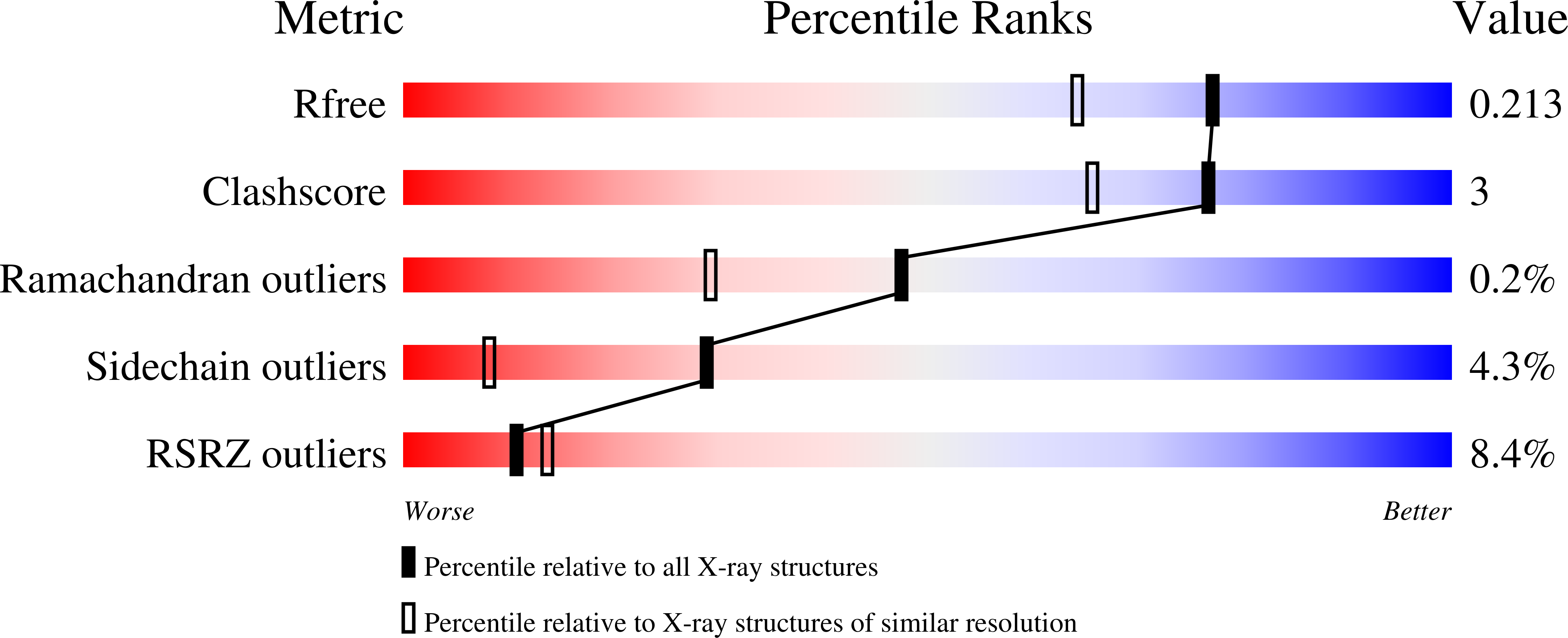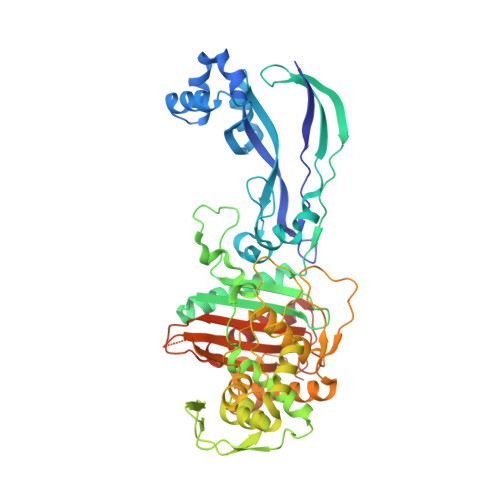SAR and Structural Analysis of Siderophore-Conjugated Monocarbam Inhibitors of Pseudomonas aeruginosa PBP3.
Murphy-Benenato, K.E., Dangel, B., Davis, H.E., Durand-Reville, T.F., Ferguson, A.D., Gao, N., Jahic, H., Mueller, J.P., Manyak, E.L., Quiroga, O., Rooney, M., Sha, L., Sylvester, M., Wu, F., Zambrowski, M., Zhao, S.X.(2015) ACS Med Chem Lett 6: 537-542
- PubMed: 26005529
- DOI: https://doi.org/10.1021/acsmedchemlett.5b00026
- Primary Citation of Related Structures:
4WEJ, 4WEK, 4WEL - PubMed Abstract:
A main challenge in the development of new agents for the treatment of Pseudomonas aeruginosa infections is the identification of chemotypes that efficiently penetrate the cell envelope and are not susceptible to established resistance mechanisms. Siderophore-conjugated monocarbams are attractive because of their ability to hijack the bacteria's iron uptake machinery for transport into the periplasm and their inherent stability to metallo-¦Â-lactamases. Through development of the SAR we identified a number of modifications to the scaffold that afforded active anti-P. aeruginosa agents with good physicochemical properties. Through crystallographic efforts we gained a better understanding into how these compounds bind to the target penicillin binding protein PBP3 and factors to consider for future design.
Organizational Affiliation:
Infection Innovative Medicines, AstraZeneca R&D Boston , 35 Gatehouse Drive, Waltham, Massachusetts 02451, United States.















